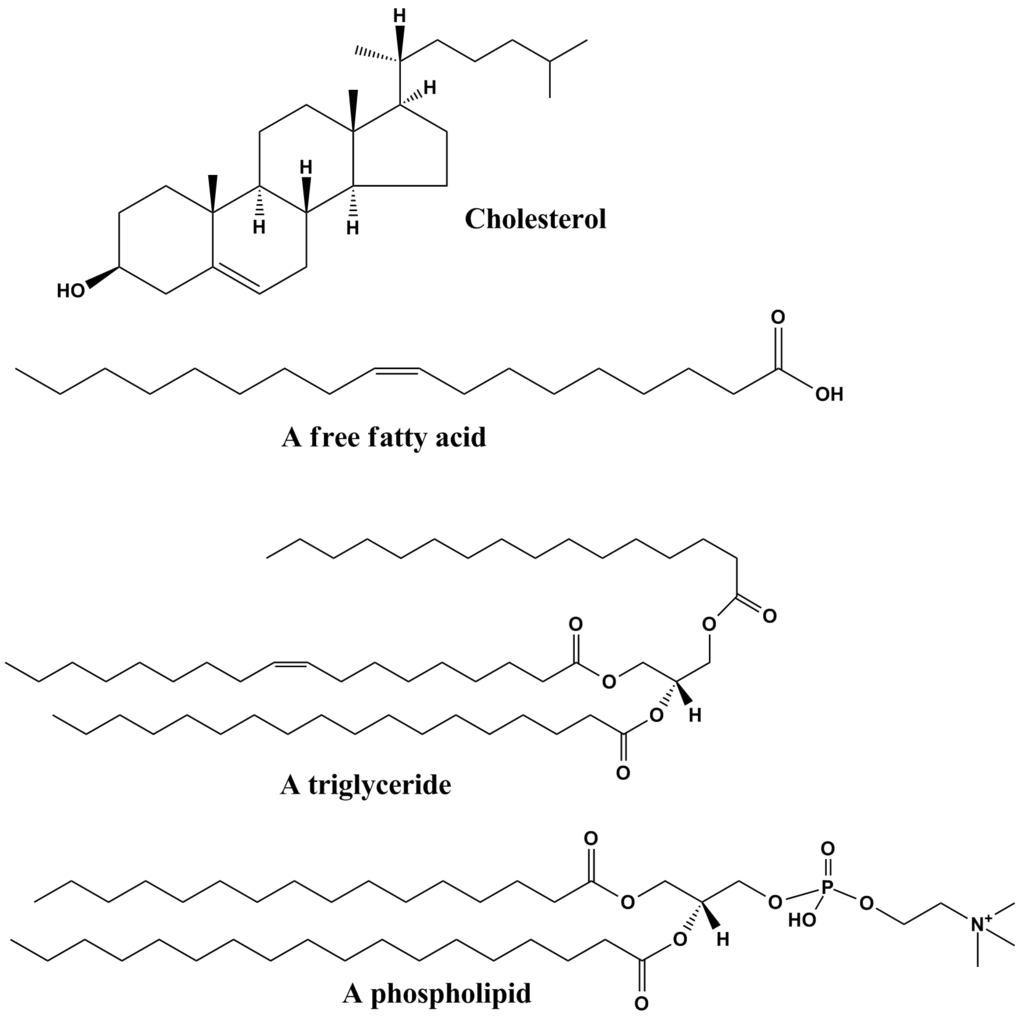Last Updated: 19 September 2022

Figure 1. The chemical structures of different Lipids.
Lipids are fatty, waxy, or oily compounds that are soluble in organic solvents and insoluble in polar solvents such as water. Lipids include fats and oils (triglycerides), phospholipids, waxes, and steroids. Within the human body, the functions of Lipids include storing energy, signalling, and acting as structural components of cell membranes. Their solubility is a key characteristic which determines their role within the human body. Lipids are broken down by the enzyme Lipase.
In the cell membrane, phospholipids are arranged in a bilayer manner, providing cell protection and serving as a barrier to certain molecules. For example, nonpolar molecules and small polar molecules, such as oxygen and water, can easily diffuse in and out of the cell. Large, polar molecules, for example, glucose, cannot pass freely so they need the help of transport proteins.
In the ear, cerumen or ear wax (a lipid) helps protect the skin of the ear canal.
An example of a steroid is cholesterol. Cholesterol is produced in the liver and is the forerunner to many other steroid hormones, such as estrogen, testosterone, and cortisol. It is also a part of cell membranes, inserting itself into the bilayer and influencing the membrane’s fluidity.
Sources and Citations:
* Please be advised: always seek medical consultation if you require medical help or attention. The contents of this Codex are for educational purposes and are not intended to offer personal medical advice.